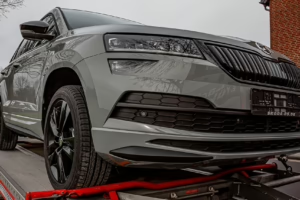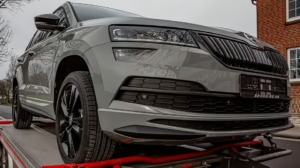Driving Innovation: How Leading Car Brands Are Shaping the Future of Mobility
The automotive industry is at a transformative crossroads, where traditional ideas about transportation are being challenged and redefined. As the world grapples with issues like climate change, urban congestion, and technological disruption, leading car brands are stepping up to innovate and shape the future of mobility. This article explores how these brands are pioneering sustainable technologies, integrating advanced software, and revolutionizing vehicle ownership to create a better tomorrow.
1. Embracing Electric Vehicles (EVs)
Major Players in the EV Market
Car manufacturers like Tesla, Ford, and Volkswagen are at the forefront of the electric vehicle movement. Tesla has set a high standard with its range of EVs that promise not only sustainability but also high performance. The Model S, Model 3, Model X, and Model Y showcase Tesla’s cutting-edge technology and commitment to environmentally-friendly transportation. Meanwhile, Ford’s Mustang Mach-E and Volkswagen’s ID.4 represent a significant shift in legacy brands adapting to market demands for sustainable options. The success of these models illustrates a growing consumer appetite for electric vehicles, prompting traditional automakers to pivot away from their gas-guzzling past.
Infrastructure Development
However, innovation goes beyond just manufacturing. These companies are investing heavily in charging infrastructure to alleviate range anxiety, ensuring that consumers feel confident about making the switch to electric. Partnerships with charging networks, like Ford’s collaboration with Electrify America, exemplify this commitment. Furthermore, innovative solutions like Tesla’s supercharger stations are key components of this strategic push, enabling faster charging times and expanding access for EV users. By developing extensive charging networks, these automakers make it easier for consumers to embrace electric vehicles as a viable alternative to traditional combustion engines.
2. Autonomous Driving Technology
Advances in AI and Machine Learning
Brands like Waymo, a subsidiary of Alphabet Inc., and General Motors’ Cruise are pioneering the future of autonomous vehicles. By leveraging advanced AI and machine learning algorithms, these companies are developing self-driving technologies that promise to make road travel safer and more efficient. Waymo has already launched its autonomous ride-hailing service in select cities, demonstrating the potential of driverless technology to transform how we travel. As these technologies mature, they could significantly reduce traffic accidents attributed to human error, improving overall road safety.
Regulatory and Safety Considerations
The shift toward autonomy also compels car manufacturers to navigate complex regulatory landscapes. Collaborating with governments and regulatory agencies will be essential to ensure that autonomous vehicles meet safety standards while serving urban and rural needs effectively. Notably, the National Highway Traffic Safety Administration (NHTSA) in the U.S. has established guidelines to facilitate these advancements. As regulations evolve, manufacturers will need to prioritize transparency and public safety, earning consumer trust in what is often perceived as a daunting technological leap.
3. Integration of Connectivity and Software
Smart Vehicles: The Internet of Things (IoT)
Leading brands are emphasizing the importance of connectivity. Modern vehicles are being equipped with IoT technology that allows for real-time data sharing, predictive maintenance, and seamless integration with mobile devices. Companies like BMW and Mercedes-Benz are delivering exceptional in-car experiences through infotainment systems that provide navigation, entertainment, and communication, all at the driver’s fingertips. The integration of smartphone apps enhances convenience, allowing drivers to remotely start their cars or monitor battery life and charging status.
Over-the-Air Updates
Tesla has popularized the model of over-the-air (OTA) software updates, allowing vehicles to receive the latest enhancements and fixes without requiring a visit to the service center. This trend is being embraced by other car manufacturers, enhancing the user experience and prolonging the life cycle of the vehicle through continuous improvements. The ability to update software remotely enables brands to respond quickly to customer feedback and fix potential issues, further solidifying customer loyalty in an increasingly competitive market.
4. Rethinking Vehicle Ownership
Subscription and Shared Mobility
The traditional model of car ownership is being disrupted by subscription services and shared mobility solutions. Companies like Zipcar and even traditional manufacturers such as BMW with its DriveNow service are offering a flexible approach to vehicle use. This trend not only reduces the number of vehicles on the road but also minimizes environmental impact. Users can choose access to various vehicles based on their needs, which diminishes the commitment tied to vehicle ownership. Additionally, subscription services often include maintenance and insurance costs, providing an all-in-one solution for consumers.
Urban Mobility Solutions
Some brands are investing in micro-mobility solutions, such as e-scooters and bike-sharing programs, recognizing that transportation is not a one-size-fits-all solution. Partnerships with ride-sharing companies, like Uber and Lyft, further expand mobility options, catering to a diverse urban population. By fostering ecosystems that combine different modes of transport, brands can help reduce congestion and improve overall urban mobility. The rise of these alternatives reflects a significant cultural shift in how people perceive and utilize transportation in densely populated areas.
5. Sustainable Practices in Manufacturing
Greener Production Technologies
Companies such as Honda and Nissan are integrating sustainable practices in their manufacturing processes. The use of recycled materials, renewable energy sources, and waste reduction initiatives are becoming standard in the production of vehicles, aligning the automotive industry with global sustainability goals. For example, Nissan’s “Nissan Green Program” aims to minimize environmental impacts throughout the vehicle lifecycle. By focusing on sustainability in production, these brands not only enhance their public image but appeal to environmentally-conscious consumers who prioritize eco-friendly options.
Lifecycle Approach
Brands are also beginning to adopt a lifecycle approach to vehicles, focusing on their entire lifespan—from production to disposal. This holistic view encourages recycling and sustainable practices that minimize ecological footprints. Aspects such as sourcing materials sustainably and promoting end-of-life vehicle recycling contribute to a circular economy, reducing waste and encouraging responsible consumption among consumers. This model aligns with broader sustainability goals and fosters a culture of responsibility, something increasingly valued by consumers today.
Conclusion
As the automotive industry accelerates toward a future defined by innovation, leading car brands are navigating the evolving landscape of mobility. Through the adoption of electric vehicles, autonomous driving technology, enhanced connectivity, and sustainable practices, these companies are not just keeping pace with change; they are shaping it. The car of the future promises to be not just a mode of transport but also a smart, integrated solution that meets the needs of a new generation.
As we embrace these advancements, we can look forward to a more sustainable, efficient, and connected world of mobility. This transformation not only addresses current transportation challenges but also paves the way for a future where vehicles contribute positively to society and the environment. Moving forward, the fusion of technology, sustainability, and innovative ownership models will define the next era in the automotive sector, making mobility accessible and environmentally friendly for all.
[modern_footnote_source_link]

























Add Comment